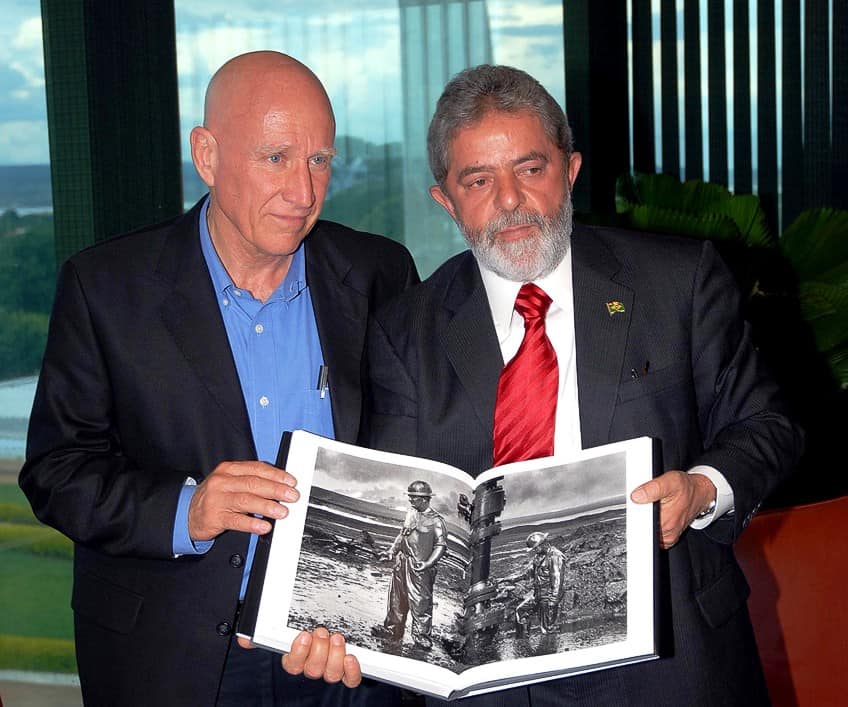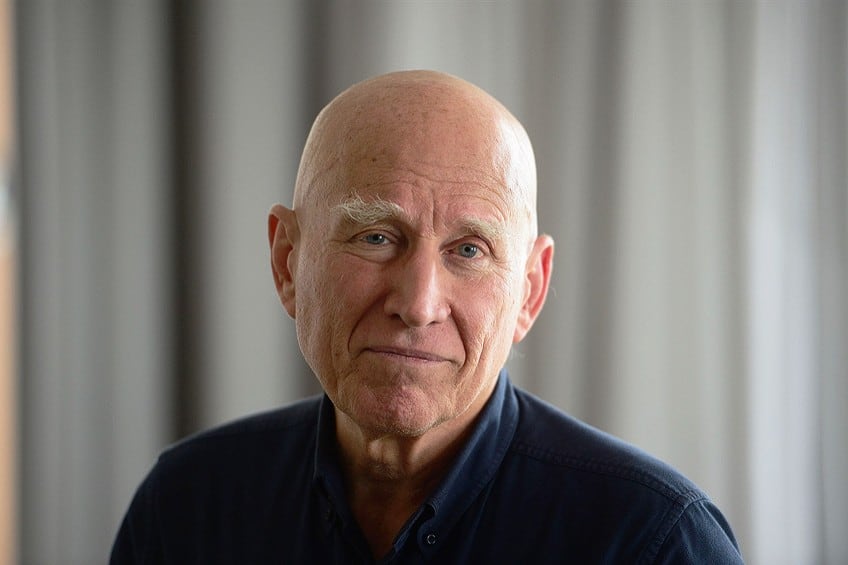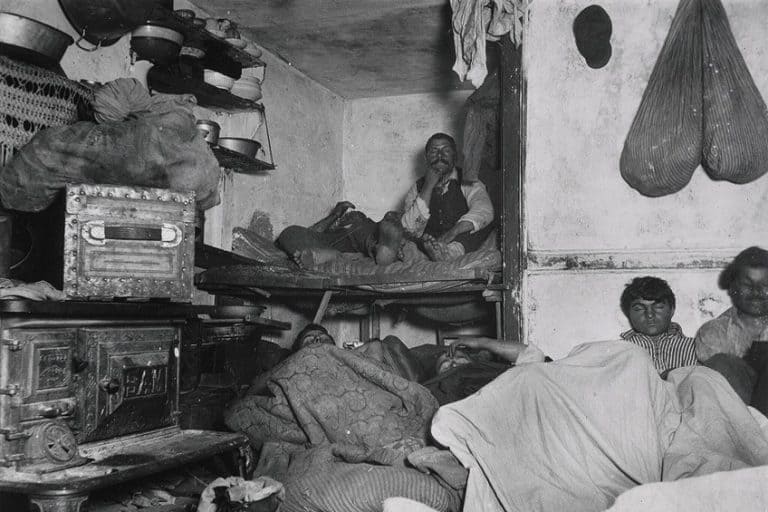Sebastião Salgado – A Look at the Brazilian Photojournalist
Renowned Brazilian photographer Sebastião Salgado is a multi-award-winning social documentary photographer who has, for decades, embarked on many personal projects to bring awareness to the socio-economic conditions of communities around the world. In this article, we will review the life and photographic career of the famous UNICEF Goodwill Ambassador, including some of Sebastião Salgado’s best photographs that have captured the world’s most powerful visuals in monochrome.
Table of Contents
Documenting Reality in Monochrome: A Sebastião Salgado Biography
| Artist Name | Sebastião Ribeiro Salgado Júnior |
| Date of Birth | 8 February 1944 |
| Nationality | Brazilian |
| Associated Movements, Themes, and Styles | Contemporary art, photojournalism, social documentary, travel photography, wildlife, nature, and landscape photography |
| Mediums | Photography |
Who is Sebastião Salgado, and what are some of his best works? Sebastião Salgado is one of the most well-respected social documentary photographers of the 21st century, whose career in photojournalism exposes the world in striking and crisp monochrome moments that emphasize the socio-economic conditions of many people. From themes that traverse poverty to the impact of natural disasters, Sebastião Salgado’s camera is there to document it all, and in doing so, bring about change and real-world impact to those who need humanitarian aid.
Sebastião Salgado is also known for his position as a UNICEF Goodwill Ambassador, which he was granted in 2001, and has since traveled across 120 countries around the world to shoot projects that he felt needed more exposure.

From majestic landscapes, interesting natural wonders, and climate change to poverty, hunger, and human suffering, Salgado’s portfolio is comprehensive and visually impactful. Below, we will look at an in-depth Sebastião Salgado biography that will help you learn more about the photographer behind the lens, as well as his photography style, key themes, famous publications, and photographs.
Early Life and Education
Born as Sebastião Ribeiro Salgado Júnior in 1944, Sebastião Salgado was raised in Minas Gerais in Brazil. Salgado’s father was a cattle rancher, who intended for the young photographer to become a lawyer, however, Salgado’s career was about to shift in a very different direction.
In 1968, he graduated from the University of São Paulo with a master’s degree after earning his bachelor’s degree from the Federal University of Espírito Santo.
Between 1968 and 1969, Salgado worked for the Ministry of Finance and ended up joining the movement against the military government in Brazil. Salgado’s affiliation with the anti-militant government was seen as a radical move and led to his exile in 1969, causing him to flee with his wife, Lélia Wanick Salgado, to France. Sebastião Salgado was trained to be an economist and attended the University of Paris, where he secured his PhD.
Career Development and Photojournalism
His early career as an economist started at the International Coffee Organization, which enabled him to travel to places like Africa on projects for the World Bank. It was in Africa that Salgado discovered his passion for photography in terms of it being a serious career path that he could use to document the conditions of those whom he had encountered. Salgado decided to forget about his role as an economist and willingly chose photography in 1973. During his time, he became a freelance photojournalist.
Sebastião Salgado first began his serious career in photography while photographing different scenes as part of his first assigned projects in Rwanda before he transitioned into documentary styles.
He was employed by the Sygma photography agency and then worked for Gamma in Paris. Over the next decade, Salgado photographed a broader range of subjects, including the Mozambican Civil War and the Niger famine. It was in 1979 that he joined the global collective of photographers known as Magnum Photos. He remained with Magnum Photos until 1994 when he established a new agency, run by himself and his wife, titled Amazonas Images.

The agency was set up in Paris and was focused on representing Salgado’s photographic works and social documentary images that he shot of communities in lesser-developed countries. By 1981, his reputation had already reached the ears and eyes of those in the United States after he captured an image that featured the attempted assassination of President Ronald Reagan by John Hinckley. Throughout the 1980s, Salgado threw himself into various long-term narrative projects to expose certain stories through series. It was then that he also saw the development of his photographic style.
Sebastião Salgado’s Photography Style
The mid-1980s saw Salgado’s photography style become more refined. His early influences included figures like Henri Cartier-Bresson and Robert Capa, who inspired Salgado during his experience at Magnum Photos. The formal beauty of his black and white photographs took shape in the mid-1980s through strong compositions that seemed to maintain the nobility of those he photographed.
His photos were raw and honest. To create these strong contrast monochrome works, Salgado used a Leica R6 camera and then decided to switch to a Pentax 645 medium format camera to enable him to print larger images.
After he transitioned to digital cameras, Salgado maintained a Canon 1DS with a vast range of options on most Canon L lenses. Salgado’s approach to photography is a fusion of dramatic scale with raw documentary effects and sometimes granular textures. In addition to photographing marginalized communities and individual portraits, Salgado also captures the natural landscapes that show off the hidden beauty of the environment. He combines his photojournalistic approach with his formal compositional techniques to create such visually impactful works and unites some of his images using the same frame.
Notable Events and Publications
In the 1980s, Salgado had already started publishing his work, one of which won him an award in 1986 for his book Other Americas, which captured the lives of impoverished Latin-American groups. In 1986, he also published Sahel: Man in Distress to bring awareness to the famine in Sahel in Africa and was later followed by a 1990 series titled An Uncertain Grace, which included images of gold miners from Brazil working in the Serra Pelada gold mine and who were coated in mud.
To date, Salgado has published more than eight publications on various series that document the struggles of marginalized societies.
In 1993, he published Among Them: Workers, which documented the rapidly fading way of life experienced by manual laborers. His recognition abroad had also expanded after a major retrospective of his work debuted at the Tokyo National Museum of Modern Art in a show called In Human Effort. This exhibition was considered historically significant since it was the first time in Japan’s museum history that the works of a single photographer were shown in a national museum. In the same year, Salgado also released his Workers series, which acted as a portrait of the working class.

In 1997, Salgado received critical acclaim for his series Terra: Struggle of the Landless, which was compiled between 1980 and 1996, and captured the struggles of impoverished laborers in Brazil. The series was accompanied by a preface written by José Saramago and poems by Chico Buarque. In 2000, he published Migrations, which was a series to document the mass migration of thousands of people who were driven away from their homes by natural disasters, hunger, heightened population issues, and environmental disasters.
In 2013, he released Genesis, which captured his eight-year journey across 30 countries to reimagine the first peoples of each site at the “dawn of creation” through a series of diverse landscapes, mountains, animals, and oceans. One of his most recent projects focuses on the oil fires in Kuwait that were sparked by the Iraqi forces at the turn of the Gulf War and its effects on the environment.
Awards and Recognition
Since 2001, Salgado has received numerous awards and accolades for his contributions to documentary photography and photojournalism. By 1985, he was selected as a finalist for the Pulitzer Prize for the feature photography category and established the Instituto Terra alongside his wife in 1998. His personal project at the institute was to restore damaged portions of the Brazilian rainforest in Minas Gerais.
Since the late 1990s, Salgado has exhibited in multiple museums and galleries across the world, including the Natural History Museum in London, the Deutsches Historisches Museum, and the International Center of Photography.
His work has also been acquired by museums such as the J. Paul Getty Museum, the Centre Pompidou, the National Museum of Modern Art in Tokyo, and the Art Institute of Chicago. In 2015, Salgado was also the subject of a documentary called The Salt of the Earth, which was co-produced by his son Juliano Ribeiro Salgado, his wife, and Wim Wenders. In 2004, he was selected to be the Commander of the Order of Rio Branco in Brazil, and in 2018, as the Knight of the Order of Cultural Merit in Monaco. In 2021, Salgado was also the recipient of the Praemium Imperiale Award granted by the Japan Art Association and the Crystal Award by the World Economic Forum.
Famous Sebastião Salgado Photos
Sebastião Salgado’s portraits and photos display his technical and intuitive eye for capturing people and moments that have an impact. Below, we have compiled a selection of Sebastião Salgado’s photos that showcase some of the Brazilian photographer’s best projects.
Legs, Serra Pelada, Brasil (1986)
| Date | 1986 |
| Medium | Photograph |
| Dimensions (cm) | Unavailable |
| Where It Is Housed | Private collection |
Legs, Serra Pelada, Brasil is one of Salgado’s most famous photographs, which shows a monochrome view of people trekking up a mud-riddled incline. The image was shot at the gold mine in Serra Pelada in 1986 and narrates a haunting story from the series that Salgado shot in the 1980s. The narrative follows several weeks’ worth of Salgado’s observations on the laborers of the mine, during which he noted that there were roughly 50,000 men employed at the mine, who trekked up these inclines close to 60 times while transporting more than 60 kilograms of weight.
The payment for their services was 20 cents per trip and thus makes the photo even more powerful since the image conveys the suffering of laborers in Brazil who have to put in more effort than they are paid for.
Greater Burgan Oil Field Kuwait (1991)
| Date | 1991 |
| Medium | Platinum print |
| Dimensions (cm) | 76 x 112 |
| Where It Is Housed | Sotheby’s, New York City, United States |
Salgado once said that “to photograph you need time and one also needs time to become a part of the community”. Greater Burgan Oil Field Kuwait is part of an edition of several prints from Salgado’s series on the oil fields of Kuwait. Salgado had always insisted on exhibiting his works as series as opposed to single images, which makes the power of his storytelling more potent.
Salgado’s work is built on his refusal to separate the photographed individuals from their context.
In doing so, he successfully preserves the integrity of his images and those who are photographed while evoking an emotional response from viewers in a way that beckons the help of those with power. Salgado immerses himself in the environments that he photographs, which can be seen in his photos that communicate his understanding of the socio-economic conditions of a place.
Kampa do Rio Amônea Indigenous Territory, State of Acre, Brazil (2016)
| Date | 2016 |
| Medium | Platinum print |
| Dimensions (cm) | 56 x 76 |
| Where It Is Housed | Sotheby’s, New York City, United States |
Kampa do Rio Amônea Indigenous Territory, State of Acre, Brazil is one of Sebastião Salgado’s portraits that was created in 2016 and showcases the profile of a young girl. The young girl remains anonymous yet her image reflects her culture, as part of an indigenous group from the Kampa do Rio Amônea. She is also photographed with painted face markings, painted lips, and feathers and beads in her hair.
The high contrast of the background against her face also positions her portrait in a way that draws attention to her gaze and serious demeanor. She appears proud of her culture and heritage.
Book Recommendations
These key book recommendations will provide you with more insight into the vast landscapes and communities that Sebastião Salgado encountered. One can expect to discover many of Sebastião Salgado’s portraits and landscape images shot over decades, from Africa to Brazil.
Sebastião Salgado: Africa (2007) by Sebastião Salgado, Lelia Wanick Salgado, and Mia Couto
This marvelous collection of images encompasses Salgado’s 30-year career in shooting projects in Africa, from gorillas to the Dinka communities. Salgado embarked on more than 40 projects alone to document the effects of disease and hostile conditions on impoverished and refugee communities in parts of southern Africa. One can expect to find images of the Sub-Saharan region, including accompanying texts by Mia Couto on the consequences of colonization on the continent and its many socio-economic crises.
- Brings together Salgado’s photos of Africa in three parts
- Texts are provided by renowned Mozambique novelist Mia Couto
- Beautifully reproduced images of Salgado's photographs
Sebastião Salgado: Children / Enfants / Kinder (2016) by Sebastião Salgado and Lelia Wanick Salgado
From Angola to Iraq, Salgado’s images draw attention to some of the most important issues in humanity. This series by Sebastião Salgado captures the height of human suffering and its effects on the most vulnerable of all, children. Salgado’s series of child portraits encompasses 90 individual portraits of the children he met on his travels that reflect the neglect of society at large and the impact of crises such as poverty, disease, and the shortcomings of the world, that claim to protect children. The series was part of his extensive refugee project that highlights the enduring spirit of the children who despite their circumstances, are still able to experience enthusiasm, laughter, and joy.
- Beautiful presentation of Salgado's photography
- The book was part of Salgado's extensive refugee project
- 90 of his portraits of the youngest exiles, migrants, and refugees
Sebastião Salgado Genesis (2022) by Lelia Wanick Salgado
From scenes of nature, seafaring life, and risky environmental conditions, Sebastião Salgado showcases the beauty of the chiaroscuro monochrome palette through his eight-year epic journey across the planet. From an early age, Salgado had cultivated his love for nature and his respect for those who endure tough living conditions. Authored by the photographer’s wife, this epic project is one that anyone who loves black-and-white documentary photography can enjoy.
- The result of an epic eight-year expedition
- Featuring scenes ranging from seafaring life to landscapes
- Perfect for those who appreciate black-and-white photography
Sebastião Salgado’s black and white images are among the most famous contemporary images in photojournalism that have documented many unseen aspects of the world that need attention. If one looks closely enough, one may also notice that his images incite questions about the uncertain futures of those he photographs. In learning about key human, environmental, and civil rights issues, artists are exposed to the power of leveraging their mediums to bring awareness to such matters, and this is exactly what Sebastião Salgado does with his art.
Frequently Asked Questions
Who Is Sebastião Salgado?
Sebastião Salgado is an award-winning Brazilian photojournalist whose touring exhibitions capture the socio-economic conditions of people from 120 countries around the world. The famous photographer is also a goodwill ambassador for UNICEF and uses his photography to draw attention to pressing world issues.
What Style of Photography Does Sebastião Salgado Practice?
Sebastião Salgado specialized in social documentary photography to expose important environmental and humanitarian issues around the world. He is best known for his black-and-white photos rendered in high contrast and sharp detail. Salgado’s compositions employ formal framing techniques to capture portraits and landscapes.
What Is the Value of Sebastião Salgado’s Photos?
Sebastião Salgado’s photos are estimated to sell for up to $155,984 on auction, and are admired for their eye-catching use of contrast to highlight striking features in landscapes, portraits, and animal photos.
Jordan Anthony is a film photographer, curator, and arts writer based in Cape Town, South Africa. Anthony schooled in Durban and graduated from the University of the Witwatersrand, Johannesburg, with a Bachelor of Art in Fine Arts. During her studies, she explored additional electives in archaeology and psychology, while focusing on themes such as healing, identity, dreams, and intuitive creation in her Contemporary art practice. She has since worked and collaborated with various professionals in the local art industry, including the KZNSA Gallery in Durban (with Strauss & Co.), Turbine Art Fair (via overheard in the gallery), and the Wits Art Museum.
Anthony’s interests include subjects and themes related to philosophy, memory, and esotericism. Her personal photography archive traces her exploration of film through abstract manipulations of color, portraiture, candid photography, and urban landscapes. Her favorite art movements include Surrealism and Fluxus, as well as art produced by ancient civilizations. Anthony’s earliest encounters with art began in childhood with a book on Salvador Dalí and imagery from old recipe books, medical books, and religious literature. She also enjoys the allure of found objects, brown noise, and constellations.
Learn more about Jordan Anthony and the Art in Context Team.
Cite this Article
Jordan, Anthony, “Sebastião Salgado – A Look at the Brazilian Photojournalist.” Art in Context. October 10, 2023. URL: https://artincontext.org/sebastiao-salgado/
Anthony, J. (2023, 10 October). Sebastião Salgado – A Look at the Brazilian Photojournalist. Art in Context. https://artincontext.org/sebastiao-salgado/
Anthony, Jordan. “Sebastião Salgado – A Look at the Brazilian Photojournalist.” Art in Context, October 10, 2023. https://artincontext.org/sebastiao-salgado/.












